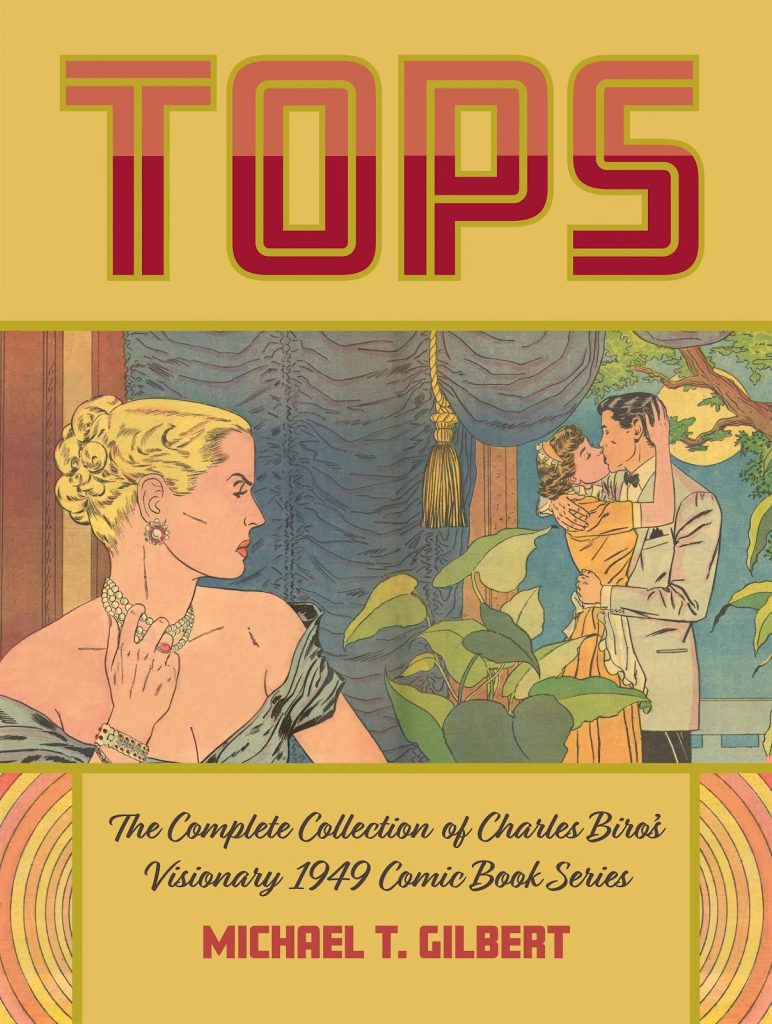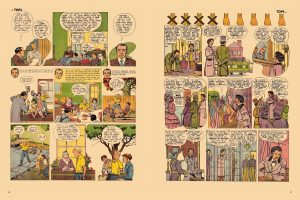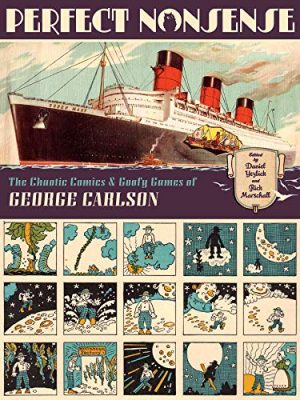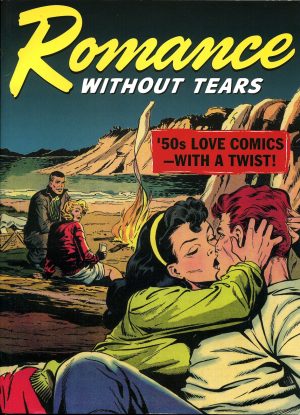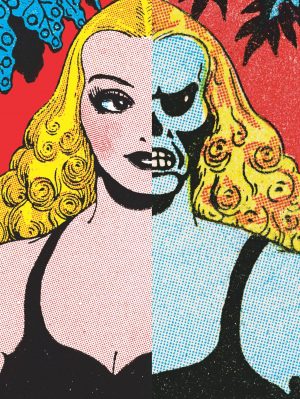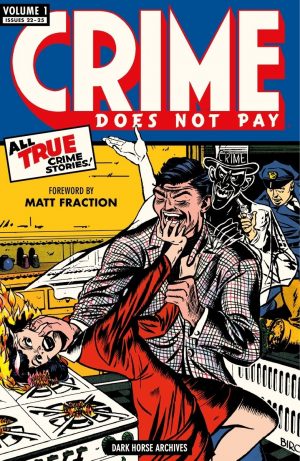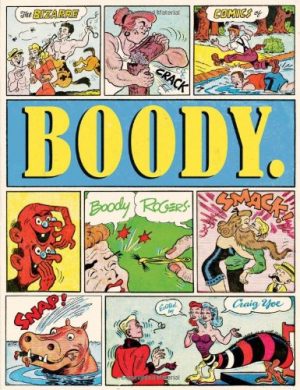Review by Frank Plowright
English speakers tend to think of the graphic novel as a relatively recent phenomenon, whereas other countries have histories with the form dating back almost a century. Graphic novels in English do predate the 1980s, but they’re isolated exceptions, as despite newspaper pages proving otherwise, the artform was considered for children. Charles Biro believed differently. During World War II superheroes and his lurid crime comics sold in high quantities to serving soldiers, so why wouldn’t adults accept a comic packaged as a magazine? His instincts were wrong and the only two issues bombed.
Thanks to editor Michael T. Gilbert’s enthusiasm, over seventy years later we can take another look at Biro’s mix of adaptations, crime, drama and romance supplied at magazine size and within a sturdy and attractive hardcover package. Following Gilbert’s introduction, several contextualising articles whet the appetite before the two issues are supplied, each running to sixty pages.
What Biro proposed differs significantly from the way we view comics aimed at adults today. There are no intellectual pretensions in presenting solidly commercial dramas with either lurid or glamorous settings. A morality tale about a thief, an explanation of the difficulties of finding exactly the right model for assignments and placing the reader on a parole board supply the opening three stories, separated by short anecdotes and joke features. Art from Reed Crandall, Dan Barry and Bob Fujitani (as Robert Fugi, sample art left) is in accomplished illustrative style and typifies the remainder, while the density of the text in word balloons and narrative captions reflects the period.
Innovation occurs, most obviously visual. Fred Kida’s sample art uses a cat motif at the top of every page to count off the assorted careers of George Francis Train, and elsewhere narrative captions feature a talking head illustration and are typeset. The stories, though, mention subjects taboo for the comics of the time, such as teenage pregnancy and casual mentions of romantic intimacy. That’s in a strip offering what would now be considered gaslighting advice to a wife concerned the romance has departed her marriage. Psychological assessment is also frequent, either in passing or as a feature, such as in the parole tale, and astoundingly, actor Melvin Douglas is given six pages to expound his theories about a world government run by the then relatively new United Nations. Very prescient is the story about “fanatical reformer” Anthony Comstock, whose appetite for censorship in the late 19th century knew no bounds, beginning with a description of fallacious arguments that would be used against comic publishers a few years later.
There’s a definite feeling of Biro hedging his bets, confident in his material, but aware of public attitudes toward comics. His background in crime stories influences his pagination, with the sensational prioritised while the biographies, advice pages and adaptations are positioned to the rear of the magazines. The topics covered by Biro are selected for mass appeal, and while the comics are verbose by today’s standards, they’re still very readable for being built around human drama, being elegantly drawn and featuring sympathetic people.
The bonus is the erudite contextualising material, including substantial biographies of the primary creators along with photographs of all that could be traced.
